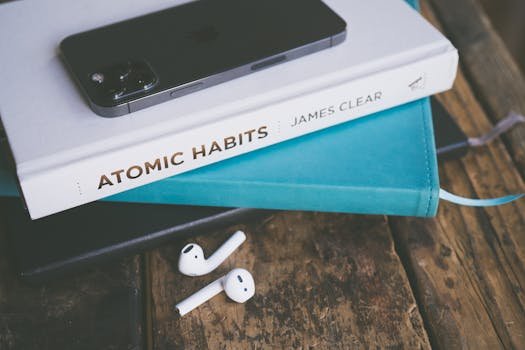A digital dopamine detox centers on the idea of refraining from or reducing to a great degree one’s interaction with digital things that might serve as a stimulant. These things would be the nanoscale computers that we call smartphones, the virtual platforms that span our digital lives, and the (at times) computer-like toys that we call video games. They are not bad in and of themselves. They can be pleasurable. But if one is trying to retrain one’s brain and recalibrate one’s dopamine system, they are off-limits.
A dopamine detox attempts to reset the brain’s dopamine pathways so that they work better, allowing for a return to enhanced cognitive clarity and focus, a reduced level of anxiety, and a better control over our digital habits. A typical 7-day detox plan is recommended. This is a fairly standard period of time to take off from digivation (our new word for digital activation, which is the opposite of detox). After this time, hopefully, we can return to the full usage of life without feeling out of control.
Key Scientific Insights and Practical Steps

Dopamine and Digital Overload
Digital platforms are designed to give you regular dopamine hits. They do this through notifications, likes, and instant feedback loops. As a society, we are clearly distracted; average attention spans are decreasing. But distraction isn’t the main problem. The main problem is stimulation. It’s the overstimulation we get from all these digital devices, especially when you consider that the brain has evolved to be stimulated by just a few dopamine hits. Now we’re talking about engineering for millions.
(Desai et al., 2024)
Neurological Reset and Focus Enhancement
Steering clear of digital signals that trigger high dopamine release allows the brain to recalibrate. In this recalibration, receptor sensitivity improves, and the initial results are in Haugen 2024 and Hansen 2024, where the cognitive enhancements following the digital detox are discussed. These enhancements are said to occur because the brain’s wiring for concentration, memory retention, and emotional regulation has improved.
Holistic Well-being Benefits
In addition to cognitive benefits, digital detox promotes mental well-being by lessening anxiety and stress and by reducing the symptoms of digital addiction. Detoxification helps users reestablish control over their impulsive digital behavior and nudges them toward a more mindful and engaged—not mindless or, worse, soulless—way of using technology.
7-Day Detox Framework
Day 1-2: Understanding and Weaning — identifying reliance on technology, cutting back on unnecessary use of devices.
Engaging in physical activity, nature walks, meditation, and reading in place of digital dopamine triggers.
Days 6-7: Integration and reflection—sustainable digital habits planning and detox journaling (Vishwakarma, 2022).
Behavioral and Environmental Strategies

Establishing unambiguous limits (e.g., no cell phone at the dinner table or in the hour before sleep), turning off alerts, and employing applications to curtail compulsive scrolling are some of the commonsense ways to make digital detoxing easier. The more you can make smartphone use a conscious choice and the less it can intrude upon the parts of your life that are meant to be okay with no digital devices, the better.
Challenges and Relapse Prevention
The first few days can cause some people to feel uncomfortable and to want to give up. Having people around who understand what you’re going through—and who can also help keep you on the right track—makes it much more likely that you’ll stick with the program. That can apply to both in-person and digital help. The research here was done with men in prison. They took part in group therapy sessions while also receiving individual counseling (Hendriksen, 2024).
Scientific Criticism and Considerations
Although anecdotal and some empirical evidence provides support for dopamine detox, critics say that the pathways are too complex for the supposed method—and its proponents—to have any real basis. Resetting the dopamine pathway, they argue, cannot be done simply by going without digital stimulation for a period of time (Mehring, 2022).
Digital Dopamine Detox: Summary of Relevant Sources

Desai et al. (2024) – A review of dopamine fasting and holistic well-being that presents digital detoxing as a way to recalibrate your dopamine responses and re-gain cognitive focus. Link to PDF
Hansen (2024) – Explores the neuroscience of attention and the digital detox’s potential to repair attention spans by fixing dopamine overstimulation. Book preview.
Neelakandan (2024) – An internet addiction and mental health clinical review that indicates how digital detox programs influence reward circuitry of the brain. Journal Link
Vishwakarma (2022) – Research article on the addiction to social media and the role of dopamine in this process. The author emphasizes that detox is necessary for optimal creative and emotional recovery.
Link to PDF
Sehic (2024) – Dissertation about digital behavior that can regulate itself, centering on the ways a person can “detox” from technology by way of setting either goals or boundaries, or both. PDF.
Hendriksen (2024) – A case study on teenage mindfulness and digital detox as a means to disrupt the dopamine-driven addiction to digital devices. PDF
Moreing (2022) – Offers a critical viewpoint on the commonly held belief that dopamine is a central player in why individuals have become so dependent on smartphones and other digital devices. In “Dopamine Detox: A Nuanced Understanding of Brain Adaptation Processes,” the author argues for an understanding of brain adaptation processes that is more in line with what we presently know about these complex processes.
Rajan (2024) – Delves into how cognitive rejuvenation can be achieved by detoxing from the digital world and restoring the ability to pay attention in a sustained and focused way.
DeFrank (2022) – Outlines a realistic 14-day digital detox for children that connects the practice with expected beneficial outcomes in behavior, given what we know about how the digital world interacts with regulatory pathways for dopamine and other neurotransmitters.
Price (2025) – All-encompassing manual for smashing digital addictions centering on the triggers that release the court neurotransmitter dopamine and on carrying out a detox of the digital kind, Chapter 1 is in our ideas section.
A 7-day digital dopamine detox can reset the brain’s reward system. It might improve your focus and reduce your anxiety. It could allow you to form a healthier relationship with the digital aspects of your life. But the detox isn’t a quick fix. And it’s certainly not a whole lot of nothing for a set number of days, followed by the resumption of regular life. Instead, it’s a process that recalibrates your brain and body to work without the digital crutch they seem to have come to depend on.

